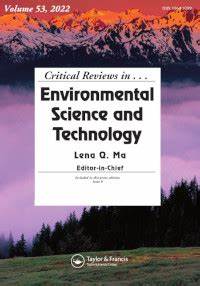复苏有活力但不可培养的微生物:一种非常有前途的增强生物修复策略
IF 13.2
1区 环境科学与生态学
Q1 ENVIRONMENTAL SCIENCES
Critical Reviews in Environmental Science and Technology
Pub Date : 2025-06-18
DOI:10.1080/10643389.2025.2463335
引用次数: 0
摘要
活但不可培养(VBNC)状态是微生物对胁迫作出反应以确保长期生存的一种普遍现象。迄今为止,已有超过100种微生物在各种应激条件下进入VBNC状态。在VBNC状态下,细胞经历形态、生理和遗传变化,不同微生物种类和应激条件下VBNC状态形成的机制不同。尽管在医药和食品安全领域对微生物的VBNC状态进行了广泛的研究,但对污染物降解微生物的VBNC状态的研究仍然有限。越来越多的证据证实,在能够降解多氯联苯(pcb)和苯酚的微生物中存在VBNC状态。作为微生物资源的重要组成部分,VBNC微生物的复苏对污染环境的有效微生物修复至关重要。本文综述了微生物中VBNC状态的形成、特征和机制。它还概述了复苏VBNC细菌的各种方法,特别关注复苏促进因子(Rpfs)。从环境生物修复的角度,重点介绍了VBNC状态细菌的潜力,Rpfs在污染环境中复苏VBNC细菌中的应用,以及利用复苏菌株作为接种剂进行环境生物修复的可行性。本文章由计算机程序翻译,如有差异,请以英文原文为准。
Resuscitation of viable but nonculturable microorganisms: A highly promising strategy for enhanced bioremediation
The viable but non-culturable (VBNC) state is a common phenomenon through which microorganisms respond to stress to ensure long-term survival. To date, more than 100 microbial species have been reported to enter the VBNC state under various stressful conditions. In the VBNC state, cells undergo morphological, physiological, and genetic changes, with the mechanisms of VBNC state formation differing among microbial species and stressful conditions. Although the VBNC state has been extensively investigated in the fields of medicine and food safety, research on the VBNC state of pollutant-degrading microorganisms remains limited. Mounting evidence has confirmed the existence of the VBNC state in microorganisms capable of degrading polychlorinated biphenyls (PCBs) and phenol. The resuscitation of VBNC microorganisms, which represent a significant portion of microbial resources, is crucial for the effective microbial remediation of polluted environments. This review provides a comprehensive summary of the formation, characteristics, and mechanisms of the VBNC state in microorganisms. It also outlines various methods for resuscitating VBNC bacteria, with a specific focus on resuscitation-promoting factors (Rpfs). Importantly, from the perspective of environmental bioremediation, this review highlights the potential of VBNC state bacteria, the application of Rpfs in resuscitating VBNC bacteria in polluted environments, and the feasibility of utilizing resuscitated strains as inoculants for environmental bioremediation.
求助全文
通过发布文献求助,成功后即可免费获取论文全文。
去求助
来源期刊
CiteScore
27.30
自引率
1.60%
发文量
64
审稿时长
2 months
期刊介绍:
Two of the most pressing global challenges of our era involve understanding and addressing the multitude of environmental problems we face. In order to tackle them effectively, it is essential to devise logical strategies and methods for their control. Critical Reviews in Environmental Science and Technology serves as a valuable international platform for the comprehensive assessment of current knowledge across a wide range of environmental science topics.
Environmental science is a field that encompasses the intricate and fluid interactions between various scientific disciplines. These include earth and agricultural sciences, chemistry, biology, medicine, and engineering. Furthermore, new disciplines such as environmental toxicology and risk assessment have emerged in response to the increasing complexity of environmental challenges.
The purpose of Critical Reviews in Environmental Science and Technology is to provide a space for critical analysis and evaluation of existing knowledge in environmental science. By doing so, it encourages the advancement of our understanding and the development of effective solutions. This journal plays a crucial role in fostering international cooperation and collaboration in addressing the pressing environmental issues of our time.

 求助内容:
求助内容: 应助结果提醒方式:
应助结果提醒方式:


